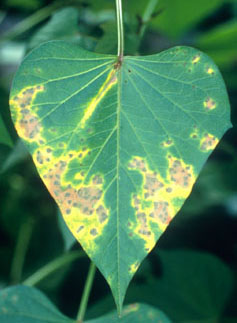Functions of Copper
In biological systems, copper is primarily a catalytic metal. Its most important function is to allow the system to deal with iron.
Copper activates senzymes in plants which are involved in lignin synthesis and it is essential in several enzyme systems. It is also required in the process of photosynthesis, is essential in plant respiration and assists in plant metabolism of carbohydrates and proteins.
Animals need Copper (Cu) for body, bone and wool growth, pigmentation, healthy nerve fibres and white blood cell functioning.
There are two main causes of copper deficiency in sheep and cattle: low copper levels in plants due to copper-deficient soils and an induced deficiency caused by excessive levels of molybdenum and sulphur in pasture or feed supplements.
| Copper deficiency in plants | Copper deficiency in animals |
| Weak clover nodulation | Loss of pigment from coloured hair |
| Low protein in grain | Falling disease |
| Fungal diseases | Lameness |
| Necrosis of the leaf tips | Swayback or enzootic ataxia of lambs |
| Dark green leaves | Increased incidence in fractures in bones |
| Stunted growth | Anemia |
Copper as a chemical elemental
Copper is a chemical element with the symbol Cu (from Latin: cuprum) and atomic number 29. It is a soft, malleable, and ductile metal with very high thermal and electrical conductivity.
Copper is essential in the aerobic respiration of all eukaryotes. In mitochondria, it is found in cytochrome c oxidase, which is the last protein in oxidative phosphorylation. Cytochrome c oxidase is the protein that binds the O2 between a copper and an iron; the protein transfers 8 electrons to the O2 molecule to reduce it to two molecules of water.
The protein hemocyanin is the oxygen carrier in most mollusks and some arthropods such as the horseshoe crab (Limulus polyphemus). Because hemocyanin is blue, these organisms have blue blood rather than the red blood of iron-based hemoglobin.


